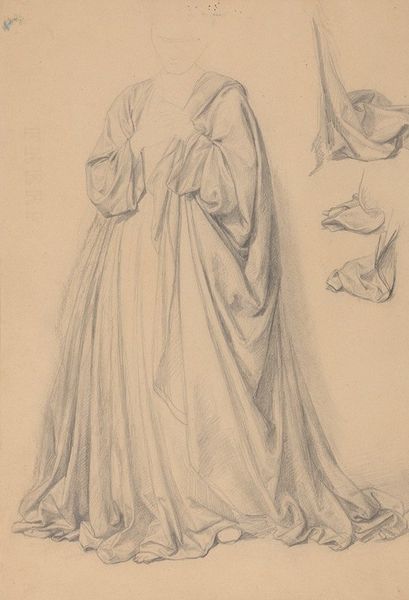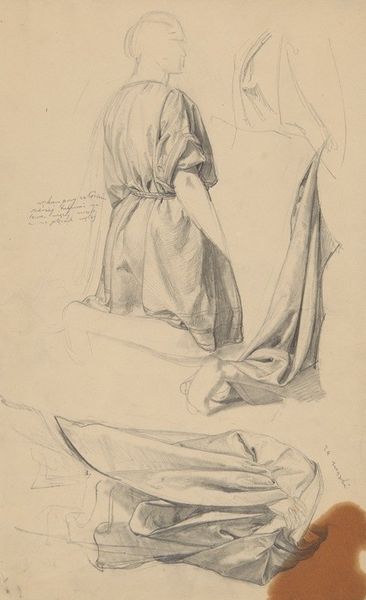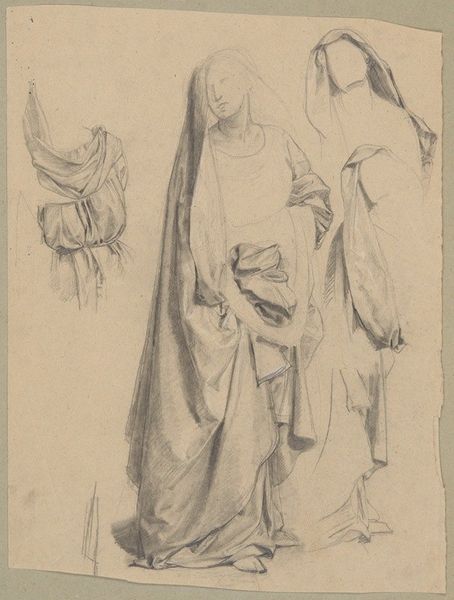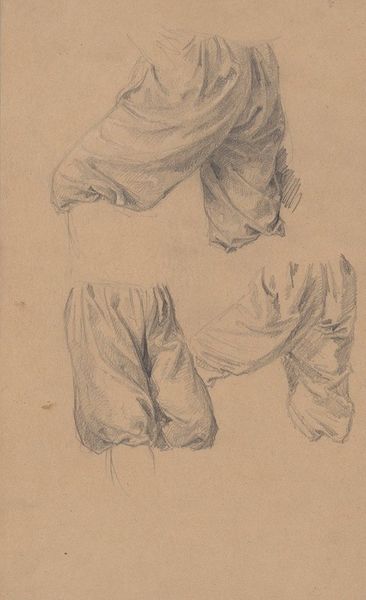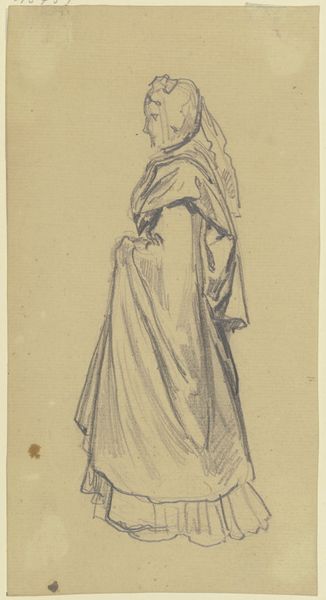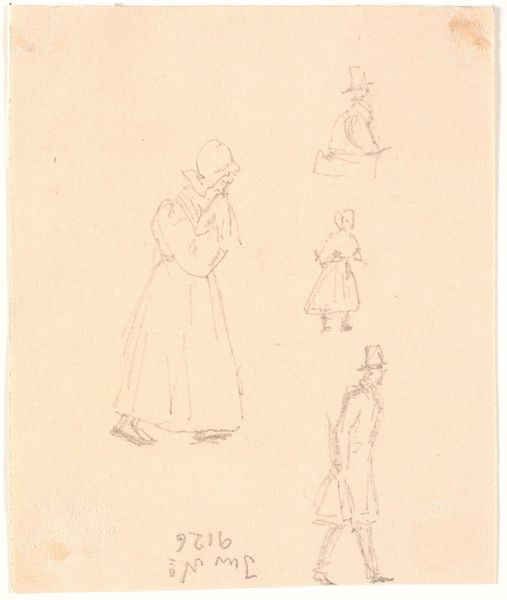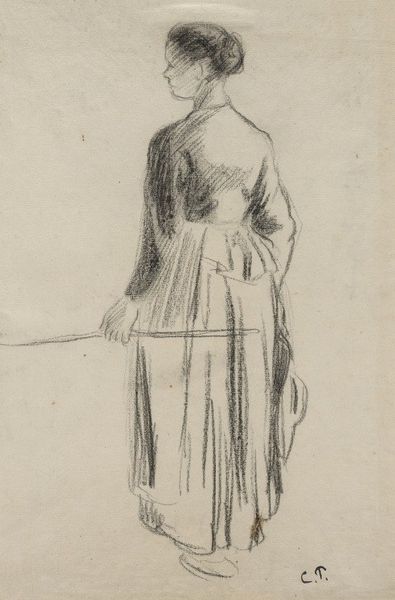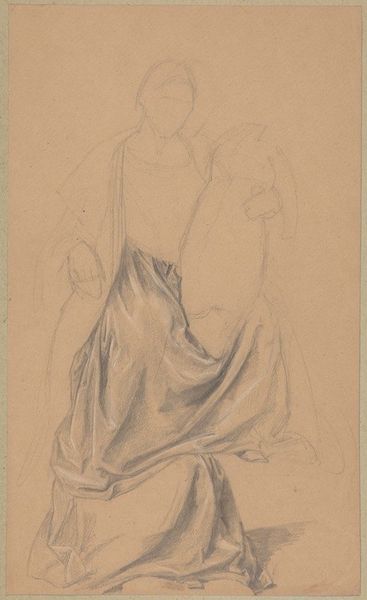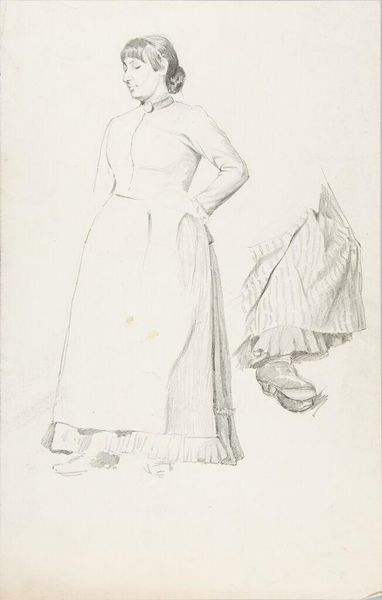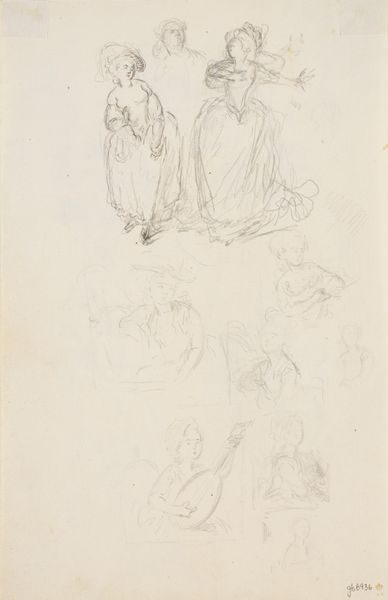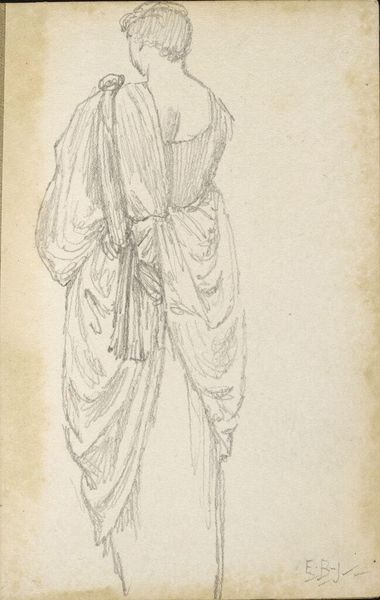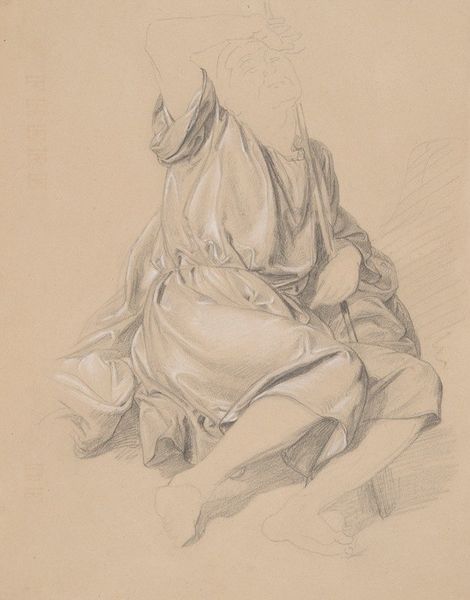
drawing, pencil
#
drawing
#
pencil sketch
#
figuration
#
pencil
#
academic-art
Copyright: Public Domain: Artvee
Editor: This is "Drapery study to the figure of Our Lady of the Rosary," a pencil drawing by Józef Simmler, created in 1864. It feels very…academic. What do you see in this piece? Curator: Well, beyond the immediate artistic skill, I see a reflection of 19th-century power structures encoded in religious iconography. Consider the role of the "Our Lady" figure – often idealized, passive, a symbol of feminine virtue meant to reinforce societal expectations. Simmler, even in a preparatory sketch, engages with these loaded symbols. Editor: So, you’re saying it’s not just about studying folds in fabric? Curator: Not entirely. The artist’s choice to focus on drapery for a religious figure points to how constructed and mediated these symbols of faith are. What stories are concealed beneath the folds? How are notions of purity and piety literally *clothed*? Consider who benefits from propagating this imagery, and who is marginalized. Editor: I hadn't considered that...it’s like the drapery acts as a screen onto which those ideals are projected. How do you think his identity influenced the piece? Curator: Simmler was Polish, working within a landscape of partitioned territories and national identity struggles. Marian devotion, the focus on Our Lady, served as a powerful symbol of cultural resistance. So, it becomes complex - the personal, religious devotion intertwined with nationalist aspirations. What seems like a straightforward academic exercise contains multitudes. Editor: That really reframes how I see the sketch. I now appreciate the image not only as art but also as a site of socio-political significance, filled with resistance and imposed narratives. Curator: Precisely! By examining the work's historical and social context, we find threads that connect it to broader discussions about power, gender, and identity.
Comments
No comments
Be the first to comment and join the conversation on the ultimate creative platform.
